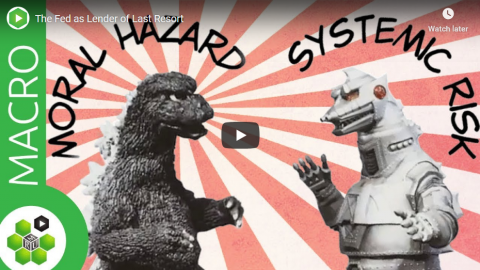Marginal Revolution University
Published on 1 Aug 2017If you heard a rumor that your bank was insolvent (in other words, it had more liabilities than assets), what would you do?
A typical reaction is to panic. What if you can’t get your money out? Your next step would likely be to try and get all of your cash in hand.
The rumor could even be false, but if enough people responded as if it were true, it would still spell trouble. Even solvent banks can have illiquid assets. If the bank can’t pay out to its depositors, the panic can spread.
This is where the Federal Reserve System comes into play. The Federal Deposit Insurance Corporation (FDIC) insures deposit accounts. And, if the insurance isn’t enough or the financial institution isn’t covered, the Fed can act as the “lender of last resort” – it can loan enough money to a bank to cover customers who want their cash.
Why does this happen? Well, panics can be a threat to the entire banking system. If one financial institution falls, even if it is insolvent, it can have a domino effect.
If you think through very recent U.S. history, you’ll quickly come up with some examples of the Fed intervening. During the 2008 financial crisis, the Fed, along with U.S. Treasury and FDIC, stepped in to “bail out” insolvent U.S. financial institutions to minimize systemic risk.
But what happens when you know that the government will clean up the mess if you make risky investments? This is certainly a big problem facing the Fed. We’ll discuss the consequences in detail in this video.
October 15, 2019
The Fed as Lender of Last Resort
Comments Off on The Fed as Lender of Last Resort
No Comments
No comments yet.
RSS feed for comments on this post.
Sorry, the comment form is closed at this time.




